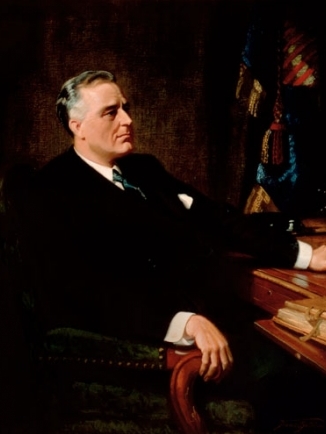


Only one president, George Washington, is listed as unaffiliated in our classification of the presidents. Given Washington’s immense popularity following his success as Commander-in-Chief of the Continental Army in the Revolutionary War, he was elected unanimously in the Electoral College and never affiliated himself with any political faction. However, many historians generally regard his policies as falling more in line with those of the Federalist Party rather than that of the Democratic-Republicans.

The very first political party to hold the office of the president was the Federalist Party. This party held control of the executive office from 1797 to 1801 during the presidency of John Adams. As the name suggests, this party supported a federal approach to government with a strong central government capable of exerting authority over the individual state governments. Members of this party tended to hail from the northern states of New England and thus supported policies of industrialization and economic expansion.

In 1801 the Democratic-Republicans came into power with the election of Thomas Jefferson to the White House. As the opposition party to the Federalists, this party tended to favor the agrarian ways of the southern states over the industrialization of the North. In addition to this, the party supported a policy of decentralization and strong state governments over that of the Federal Government.

The oldest party in the United States, the Democratic Party can trace its roots through the election of Andrew Jackson in 1828 to Barack Obama today. Over the years the party has changed to address the particular issues of the day and in many ways is completely opposite from its original positions. Initially, the Democratic Party was centered in the southern United States. As a successor the Democratic-Republicans, this party stood for agrarianism, states’ rights, and strict adherence to the Constitution. Over the years, this party has transformed to support a stronger federal government, and a looser interpretation of Constitution. Today the Democratic Party stands for social justice in the form of larger support for social programs which benefit minorities and the poor. They favor social liberalism in their support for female reproductive rights, and the legalization of same-sex marriage. While this party once held its stronghold in what was known as the “Solid South,” since Lyndon Johnson’s signing of the Civil Rights Act of 1964 and the Voting Rights Act of 1965 the party has been largely replaced in the south by the Republican Party.

The Whigs first elected a president of their party in 1840 with a victory of William Henry Harrison over the Democratic candidate President Martin Van Buren. Following Harrison’s death only thirty-one days later and the succession of John Tyler as president, the Whigs attempted to implement their policies of a strong central government which would promote economic and industrial expansion of the United States. The Whigs supported government projects to create an inter-state road and canal system along with the implementation of a public school system. In many ways, the Whigs can be viewed as the successor party of the Federalists. The Whigs failed to adequately address the issue of slavery and thus have not held the White House since Millard Fillmore left office in 1853.

The second party to have survived into the modern day, the Republican Party, like the Democratic Party has needed to change its platform to address the issues of the day and thus is almost unrecognizable compared to its original platform. The Republican Party was founded largely by Whigs who were disillusioned with their party’s inability to come to a firm stance on the issue of slavery. Early members of the Republican Party were vehemently opposed to slavery which led to the South’s secession when the Republican Party first took control of the White House in 1861 with the election of Abraham Lincoln. Following the Civil War the Republican Party continued to advocate for the rights of African-Americans while also supporting a strong Federal Government along with economic and industrial growth. During the initial years of the Great Depression, the Republican Party advocated for limited intervention in the economy and marginal support for the out of work. Thus, they were left out of office for twenty years during the presidencies of Franklin Roosevelt and Harry Truman. The party came back into power in 1952 with the election of Dwight Eisenhower and today argues for a weaker central government in favor of states’ rights, limited intervention in the economy, social conservatism, and a strong presence on the world stage.